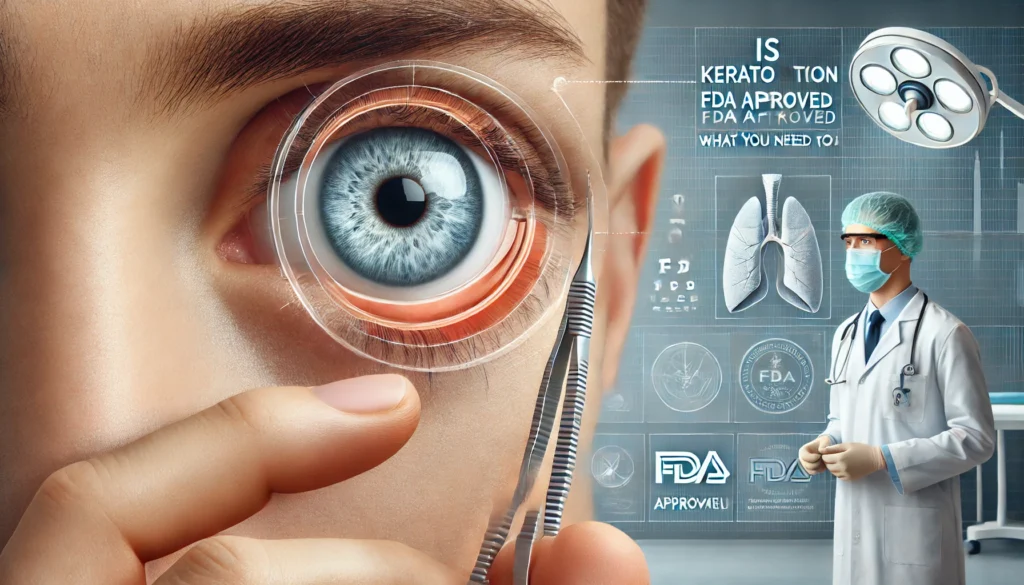Nadinne Bruna and Her Colombian Iris Implants: A Harsh Lesson in Cosmetic Eye Color Surgery

- Introduction
- Who Is Nadinne Bruna & Why Her Case Is a Wake-Up Call
- What Are Silicone Iris Implants and How Do They Work?
- Diagnosed Complications in Nadinne Bruna’s Case
- What Doctors Are Saying in 2025: The Medical Verdict
- Safe Alternatives to Change Eye Color (Without Losing Your Vision)
- Conclusion: Choose Vision Over Vanity
- FAQ: Nadinne Bruna & Her Colombian Iris Implants
Changing your eye color might seem like a glamorous trend — but for Nadinne Bruna, it became a personal tragedy. In 2016, this Argentinian-born influencer traveled to Colombia for a now-infamous cosmetic iris implant procedure. Her goal? Aesthetic enhancement. The outcome? Severe and permanent vision loss.
In this detailed guide, we'll explore what went wrong, how iris implants actually work, the major health risks involved, and — most importantly — safer, medically sound alternatives for anyone considering a permanent eye color change.
Introduction
Have you ever wanted blue or gray eyes instead of brown? You're not alone. But when it comes to making that dream a permanent reality, things can go dangerously wrong. Nadinne Bruna’s story is one of the most well-known and medically documented examples of the dangers of cosmetic iris implants.
In this article, you'll learn:
- The real story of Nadinne Bruna and her Colombian surgery
- How silicone iris implants work (and why they're risky)
- What the medical community now says about these procedures
- Healthier, safer options for eye color change
Let’s walk through the truth behind the trend with empathy, clarity, and real medical insight.
Who Is Nadinne Bruna & Why Her Case Is a Wake-Up Call
Nadinne Bruna, a former Instagram model based in Miami, traveled to Colombia in 2016 to undergo a surgery to change her natural hazel eyes to a light gray using silicone iris implants — colored discs surgically inserted into the eye.

From Aesthetic Dreams to Vision Loss
Initially, Nadinne sought the surgery for purely cosmetic reasons. However, within weeks of the procedure, her vision began to deteriorate. She reported:
- Blurred vision and halos
- Constant redness, pain, and light sensitivity
- Severe photophobia due to impaired pupil function
Over the next year, her situation worsened drastically:
- 80% vision loss in her right eye
- 50% loss in her left eye
- Emotional distress and career disruption
"This operation ruined my life. My eyesight is permanently damaged," she later told international media outlets.
Her story has since become a reference point for eye health professionals worldwide.
What Are Silicone Iris Implants and How Do They Work?

Understanding the Procedure in Detail
Silicone iris implants were originally designed for medical cases like aniridia (congenital absence of the iris) or severe trauma. Over time, some clinics — especially in countries with relaxed regulations — began offering them for purely cosmetic purposes.
Here’s what the procedure involves:
| Step | Description |
|---|---|
| 1. Pre-Op Tests | Eye pressure, corneal thickness, and iris function evaluation |
| 2. Corneal Incision | A ~2.8 mm slit is made in the cornea |
| 3. Implant Insertion | Folded silicone disc is inserted and unfolded over the natural iris |
| 4. Immediate Recovery | Use of anti-inflammatory drops, avoiding makeup, light, and screens |
💬 Did You Know? The procedure takes less than 30 minutes but carries lifelong risk.
These implants are not FDA- or EMA-approved and are classified as experimental by medical associations across the globe.
Diagnosed Complications in Nadinne Bruna’s Case
Shortly after the procedure, Nadinne developed multiple serious eye conditions:
- Glaucoma: Caused by blocked drainage channels in the eye, resulting in increased intraocular pressure
- Cataracts: Early clouding of her eye lenses, requiring surgery
- Corneal Edema and Damage: Due to endothelial cell loss from constant implant contact
- Photophobia: Loss of pupil responsiveness caused chronic light sensitivity
She underwent:
- Emergency glaucoma surgery
- Multiple follow-up procedures including implant removal
- Ongoing care with plans for a corneal transplant
👩⚕️ Her implants were removed by Dr. Ranya Habash and a surgical team at the Bascom Palmer Eye Institute — one of the top eye hospitals in the U.S.

What Doctors Are Saying in 2025: The Medical Verdict
The global medical community, from the American Academy of Ophthalmology to European health regulators, now agrees:
- These procedures pose an unacceptable risk of blindness
- They are unapproved for cosmetic use
- They are often categorized as unethical unless medically necessary
📢 "These implants offer zero medical benefit for healthy eyes and result in irreversible damage more often than not."
Patients like Nadinne are now case studies cited in professional journals, conference talks, and public health advisories.
Safe Alternatives to Change Eye Color (Without Losing Your Vision)
If you’re still considering an aesthetic change, you have much safer options.
Comparison of Eye Color Change Methods
| Method | Description | Safety | Reversible? |
|---|---|---|---|
| Colored Contacts | Non-surgical lenses worn over your eyes | ✅ Very safe | ✅ Yes |
| Keratopigmentation | Pigment injected into the cornea using a laser | ⚠️ Moderate | ❌ No |
| Laser Depigmentation | Removes brown pigment via laser (experimental) | ⚠️ Unproven | ❌ No |
✅ Our Advice: If you want a new look, start with FDA-approved colored contacts fitted by a licensed optometrist.
Conclusion: Choose Vision Over Vanity
Nadinne Bruna’s story is heartbreaking, and unfortunately, not unique. Her case is a living example of how quickly a cosmetic dream can turn into a medical nightmare.
Whether it’s for self-expression, confidence, or aesthetics — your vision should never be the cost.
At Eye Color Change, we believe in enhancing beauty without compromising health.
FAQ: Nadinne Bruna & Her Colombian Iris Implants
1. Who is Nadinne Bruna, and what eye procedure did she undergo?
Nadinne Bruna is an Argentinian Instagram model who underwent cosmetic iris implant surgery in Colombia in 2016 to change her hazel eyes to light gray using artificial silicone iris implants.
2. What kind of complications did Nadinne Bruna experience after her iris implant surgery?
She experienced severe chronic eye pain, photophobia, redness, itching, and was later diagnosed with glaucoma, cataracts, and irreversible corneal damage due to the implants.
3. Did Nadinne Bruna lose her vision due to the Colombian iris implants?
Yes. Nadinne lost 80% of the vision in her right eye and 50% in her left. Her vision loss was permanent and deeply affected her daily life and career.
4. Why are silicone iris implants so dangerous?
They disrupt normal eye function, damage internal structures, and cause high intraocular pressure. They can lead to glaucoma, corneal degeneration, and even permanent blindness.
5. Was the iris implant surgery Nadinne Bruna had approved by medical authorities?
No. The procedure is not approved by the FDA, EMA, or other leading health authorities for cosmetic use. It's considered experimental and high-risk.
6. Did Nadinne Bruna have to undergo additional surgeries?
Yes. She required implant removal surgery, emergency glaucoma surgery, and is now a candidate for corneal transplant due to the extensive damage.
7. What is the long-term outcome for patients who get cosmetic iris implants?
Most face lifelong vision problems including glaucoma, photophobia, corneal transplants, and potential blindness. These risks far outweigh the cosmetic benefits.
8. What do ophthalmologists advise about cosmetic iris implants?
They unanimously discourage them, calling them medically unnecessary, unethical, and dangerous. The risk of permanent damage is extremely high.
9. What are the safer alternatives for changing eye color?
Colored contact lenses are the only medically recommended method. They're safe, non-invasive, and reversible when prescribed and used properly.
10. How did Nadinne Bruna's case impact public awareness?
Her widely publicized story raised global awareness about the risks of cosmetic eye surgeries, leading to greater caution and informed decision-making by the public.
Check out our in-depth resources on colored contact lenses, learn about keratopigmentation, or speak with one of our certified professionals to explore safe, reliable options for eye color transformation.

Leave a Reply